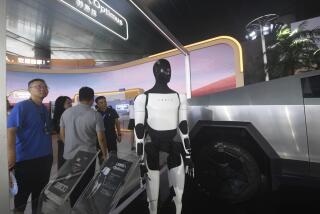Shuttle Crew Tests Robotic Vision System, Begins Medical Test Series
KENNEDY SPACE CENTER, Fla. — Columbia’s astronauts grabbed a dotted aluminum panel with the shuttle arm on Saturday and swung it about the spacecraft’s cargo bay to test a Canadian robotic vision system.
The crew of five men and one woman launched into a series of medical experiments on their third day in space, one day after completing their main job of releasing a laser-reflecting satellite. They also performed the first major test of the robotic vision system using the shuttle’s 50-foot mechanical arm.
Astronaut Charles Lacy Veach, the primary arm operator, removed the 4-foot-by-8-foot panel from its cargo bay mounting, slowly swung it around the bay and then latched it back in place. He relied on the computerized vision system for guidance.
Canadian researchers expect the system of computers and television cameras to provide more accurate information regarding the location of the end of the shuttle arm when it is being moved about. That precision normally is within about two inches in the extreme darkness and brightness of space; the vision system is expected to improve that to within a fraction of an inch.
“I think we will provide a system that makes the assembly of a space station much simpler,” Canadian astronaut Steven MacLean said.
The 10-day mission is due to end next Sunday with a landing at the space center.
More to Read
Sign up for Essential California
The most important California stories and recommendations in your inbox every morning.
You may occasionally receive promotional content from the Los Angeles Times.









